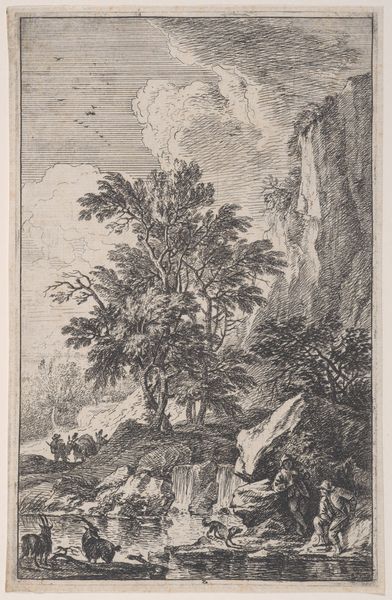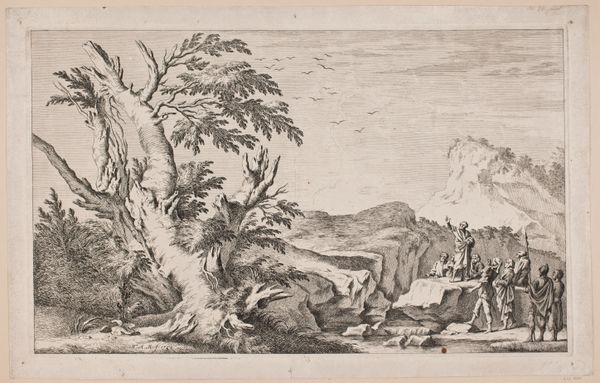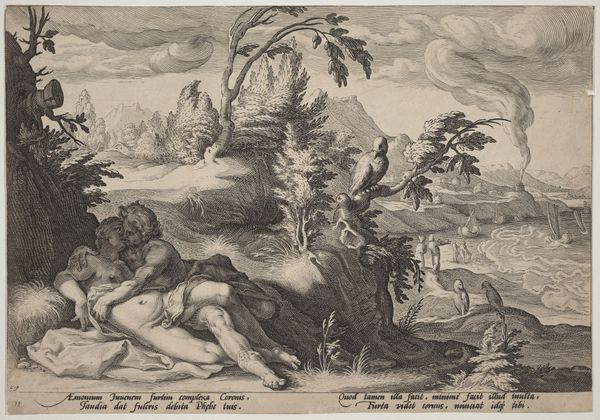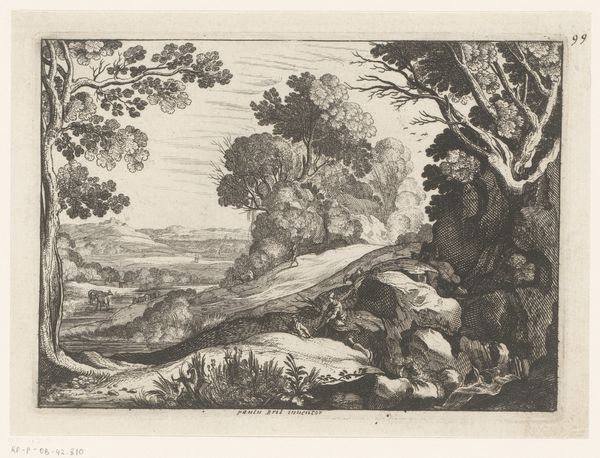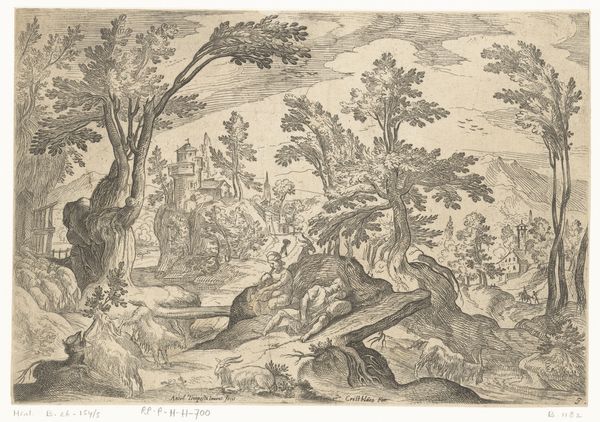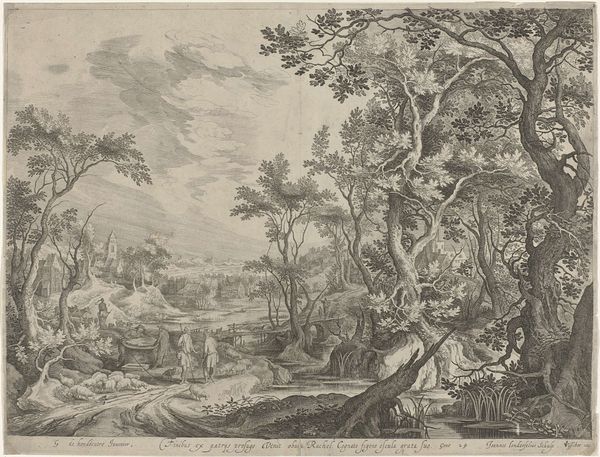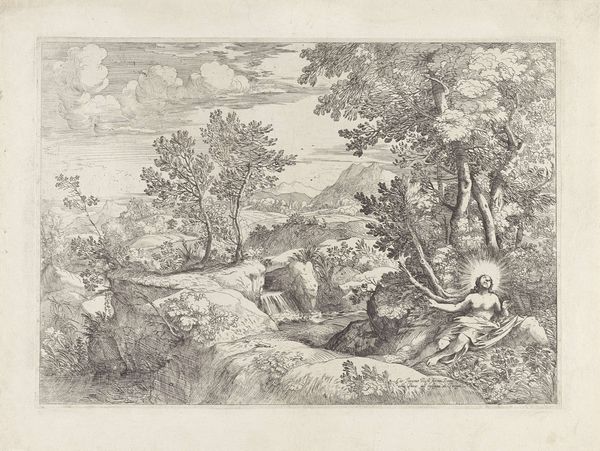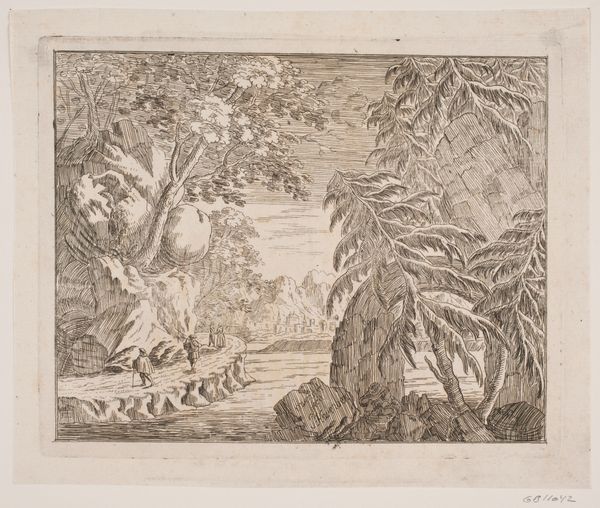
Dimensions: 268 mm (height) x 414 mm (width) (plademaal)
W.A. Müller created this etching of ‘Landscape with Jacob’s Dream’ in the late 18th century, a period defined by the Enlightenment’s focus on reason and individualism, but also a growing interest in spirituality. Here, we see a Biblical scene set within a natural landscape, characteristic of the period's artistic focus. Jacob, asleep on the ground, dreams of a ladder stretching to heaven, angels ascending and descending. This dream symbolizes a connection between the divine and the human, reflecting the era's negotiation between faith and reason. The ladder could also represent social hierarchies, a common theme of the time, especially in the context of the French Revolution. Müller's choice of landscape isn't merely a backdrop; it's an active participant in the narrative. The rugged terrain and dramatic skies evoke a sense of the sublime, a popular aesthetic concept linking nature and the spiritual. How can we understand Jacob’s emotional response to this divine vision? In what ways might this artwork reflect societal structures and spiritual beliefs of its time?
Comments
No comments
Be the first to comment and join the conversation on the ultimate creative platform.
